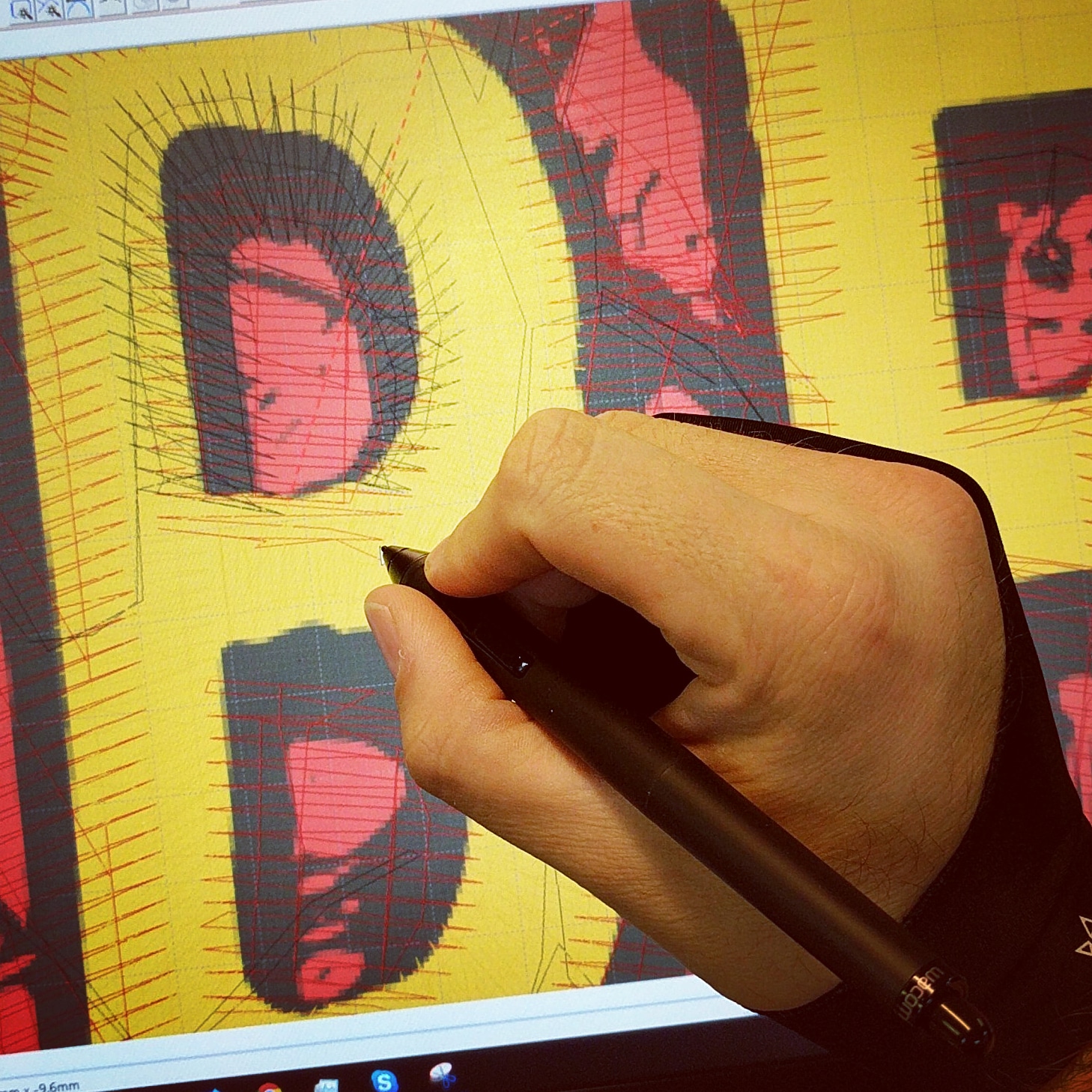Professional Digitizing for Embroidery: High-Quality Designs
Professional Digitizing for Embroidery: High-Quality Designs
Blog Article
Grasping the Needlework Digitizing Refine: Your Ultimate Guide
Embroidery digitizing is a meticulous craft that needs accuracy and proficiency to equate complex styles right into electronic formats for maker needlework. As craftsmens embark on this journey to grasp the needlework digitizing procedure, an extensive understanding of the fundamentals establishes the structure for excellence. However, beyond the primary knowledge lies a realm of advanced software program, specialized tools, and nuanced methods waiting to be checked out. By diving right into the subtleties of digitizing, one can open a world of creative opportunities and boost their embroidery jobs to new elevations.

Recognizing Needlework Digitizing Essentials
Needlework digitizing essentials create the structure whereupon complex layouts are converted right into machine-readable layouts for exact sewing. This preliminary action in the embroidery digitizing process is essential for guaranteeing that the final embroidered item is a loyal depiction of the initial style. Recognizing embroidery digitizing basics involves grasping key principles such as stitch kinds, stitch direction, thickness, padding, and pull compensation.
Sew kinds play an important role in determining the aesthetic and textural result of the embroidered layout. By choosing the suitable stitch type, whether it be satin, fill, or running stitch, digitizers can attain the preferred effect and boost the general high quality of the needlework. In addition, stitch instructions influences the flow and measurement of the style, while density establishes the spacing and protection of the stitches.
Additionally, padding stitching provides security to the layout by safeguarding the textile and stopping distortion during the needlework process. Draw compensation is an additional vital factor to consider to combat the all-natural propensity of fabric to agreement when stitched. Understanding these embroidery digitizing essentials is fundamental for producing professional-quality embroidered products.
Picking the Right Digitizing Software
Choosing the ideal digitizing software is an important choice that considerably affects the performance and top quality of the embroidery digitizing process. Digitizing for Embroidery. When selecting the ideal digitizing software program, it is essential to consider elements such as the intricacy of styles you intend to create, the user-friendliness of the software application, the degree of client assistance used, and the compatibility with your needlework maker
There are numerous digitizing software program alternatives readily available in the market, ranging from basic programs for beginners to advanced software program for specialist digitizers. Some preferred selections consist of Wilcom EmbroideryStudio, Hatch Needlework Software Application, and PulseID. These software provide a vast array of tools and features to help you create intricate styles with convenience.
Before choosing, it is suggested to discover the various software choices through free tests or demonstrations to identify which one best matches your demands. Furthermore, reviewing testimonials and looking for suggestions from skilled digitizers can offer valuable understandings right into the staminas and weak points of each software program bundle (Digitizing for Embroidery). By meticulously assessing your requirements and contrasting the functions of various digitizing software application, you can visit the website make an informed selection that enhances your needlework digitizing process
Digitizing Devices and Methods

Optimizing Style Settings for Embroidery
Mastering the intricacies of design setups is basic in attaining optimum outcomes in the needlework digitizing process, building upon the structure laid by comprehending digitizing tools and techniques. When optimizing layout setups for embroidery, it is necessary to consider factors such as stitch kind, thickness, rug, pull compensation, and registration. Sew type option influences the general feel and look of the layout, with choices like satin, fill, and running stitches providing different structures and effects. Thickness refers to the spacing and thickness of stitches, influencing the style's coverage and durability. Correct underlay sewing offers security and stops fabric distortion, especially for complex layouts or on stretchy materials. Pull settlement readjusts for material stretch throughout stitching, making certain exact design replication. Enrollment settings straighten different components of the style properly, preserving overall style honesty. By fine-tuning these design setups, embroiderers can enhance the high quality and precision of their i was reading this embroidered productions.

Troubleshooting Common Digitizing Issues
When experiencing common digitizing concerns throughout the embroidery process, it is essential to comprehend the origin and carry out effective services without delay. One common issue is stitch thickness concerns, where stitches may be as well thick, creating the fabric to pucker, or as well thin, leading to gaps in the style. Readjusting the stitch thickness settings in the digitizing software can assist settle this issue.
Another regular obstacle is string breaks throughout the needlework procedure. This can occur because of different factors such as inaccurate stress setups, plain needles, or making use of low-grade thread. Guaranteeing appropriate maintenance of the embroidery maker, consisting of normal needle adjustments and stress changes, can lessen the event of string breaks.
Moreover, design registration errors can result in misaligned components within the needlework layout. Examining the layout placement in the digitizing software program and making essential changes prior to sewing can assist in avoiding this problem. By attending to these common digitizing issues quickly and effectively, you can make sure a smoother needlework process and top notch completed products.
Conclusion
In conclusion, understanding the needlework digitizing process requires a strong understanding of the fundamentals, the ideal option of software application, and knowledge of devices and techniques. Optimizing layout settings and troubleshooting usual digitizing problems are important steps in making certain high-grade needlework results. By adhering to these steps diligently, one can attain precision and effectiveness in the digitizing process.
Report this page